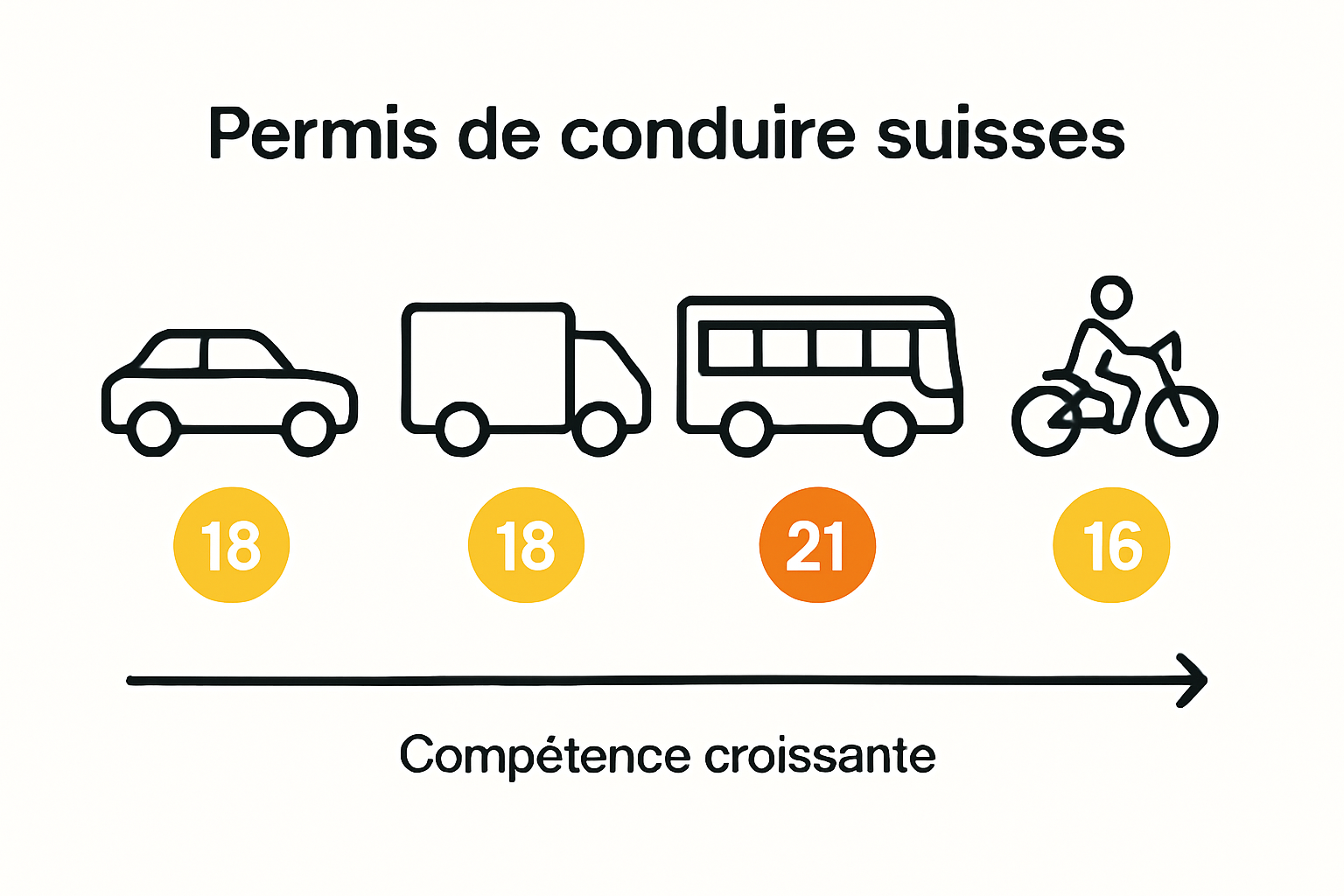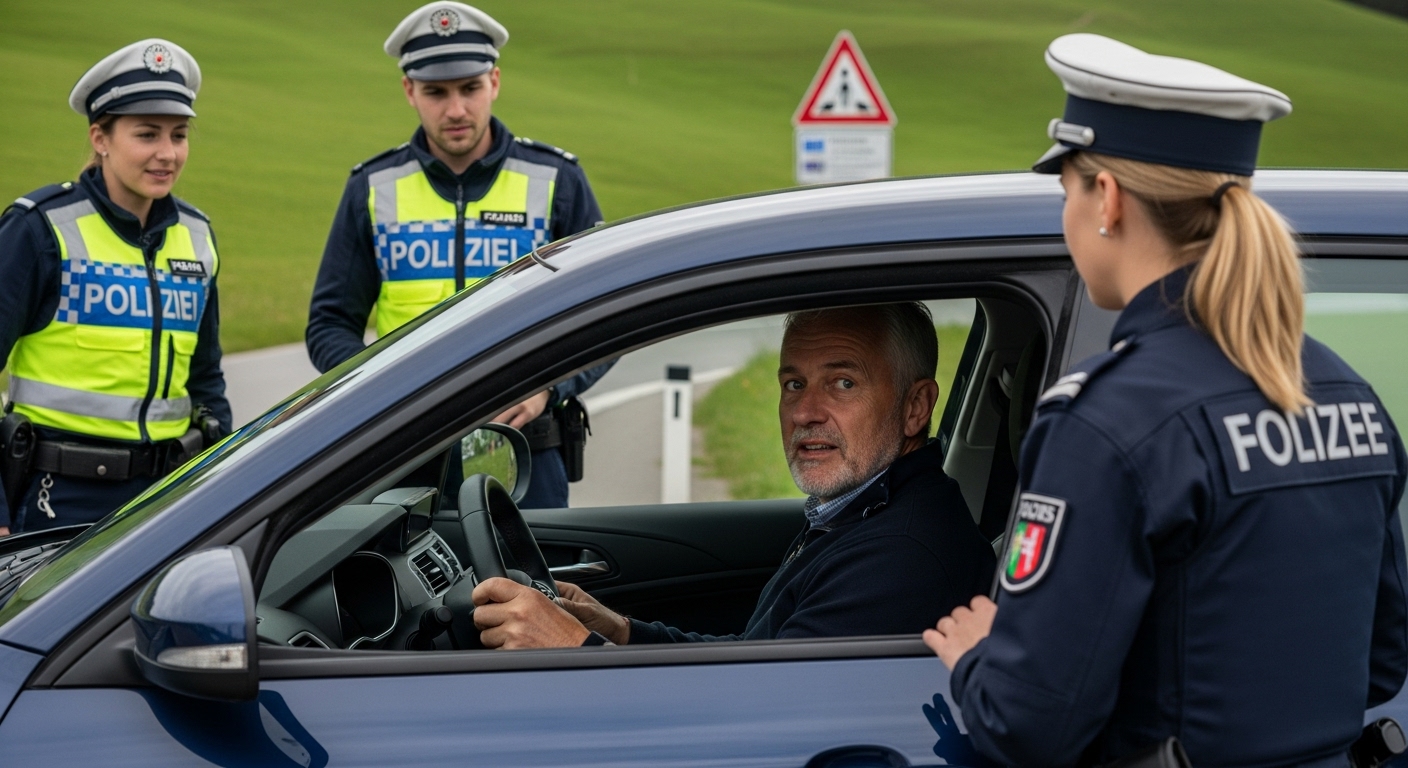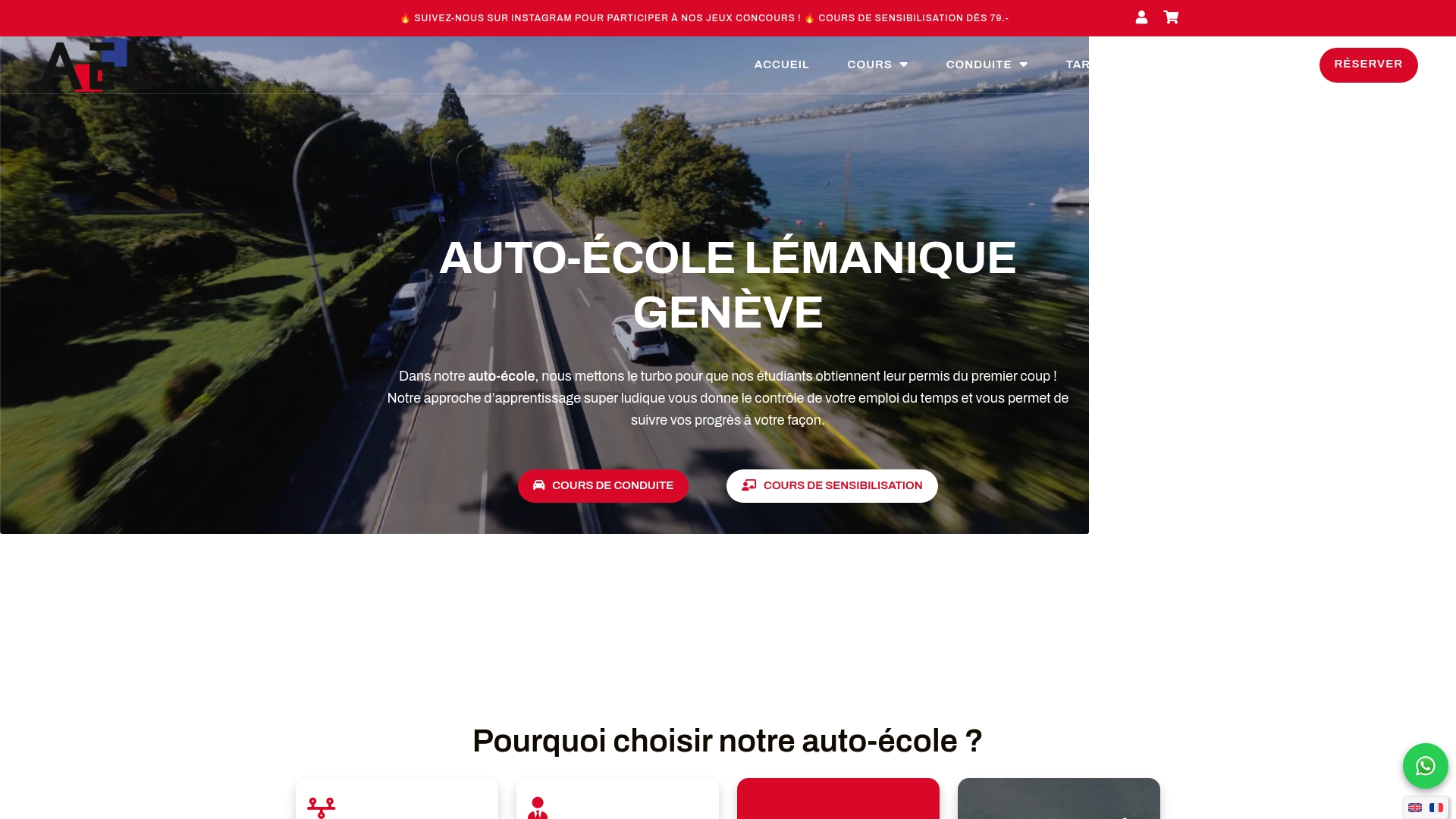A Swiss driving license is more than just a piece of plastic: it’s a passport to mobility, closely monitored by the law. Yet, while everyone thinks that learning to drive is enough, the process goes much further. Obtaining a Swiss driver’s license requires compliance with a strict minimum age – sometimes as young as 16, depending on the category– as well as passing rigorous exams and demonstrating aptitude at every stage. What few people realize is just how meticulous and exceptionally demanding this system is, and how it transforms each new driver into a major player in Swiss road safety…Everything you need to understand the legal framework of Swiss driving licenses.
Table of contents
- What is the legal framework for licensing in Switzerland?
- Why is the legal framework essential for drivers?
- How does the driver’s license process work?
- Drivers’ rights and duties under the legal framework
- Consequences of breaches of the legal licensing framework
Quick summary
| Support | Explanation |
|---|---|
| Defined license categories | In Switzerland, there are several categories of license, adapted to different types of vehicle. |
| Strict requirements | Candidates must pass theoretical and practical exams, and meet medical requirements. |
| Clear rights and responsibilities | Drivers have rights when it comes to driving, but they also have duties that must be respected to ensure safety. |
| Systematic penalties for infringements | Measures ranging from license withdrawals to fines are applied in the event of infringements. |
| Planned rehabilitation process | Rehabilitation of offending drivers includes awareness courses and skills assessments. |
What is the legal framework for licensing in Switzerland?
The legal framework for driving licenses in Switzerland is a complex and structured system that guarantees road safety and precisely defines the conditions for obtaining and validating driving licenses. These regulations, administered mainly by the Federal Roads Office (FEDRO), set strict standards for all drivers in Switzerland.
Permit categories and regulations
The Swiss system distinguishes between several permit categories, each corresponding to a specific type of vehicle. These categories are precisely defined to ensure safe and appropriate mobility. The main categories include :
- B1 licence: For light vehicles
- Permit B: For standard passenger cars
- C1 license: For light commercial vehicles
- Permit D: For professional transport
Each category has different requirements, including specific theoretical and practical training.
Here’s a table summarizing the main categories of Swiss driving license and their key features.
| Category | Authorized vehicles | Minimum age | Required training |
|---|---|---|---|
| B1 | Light vehicles | Age 16 | Theory and practical test |
| B | Passenger cars | Age 18 | Full theoretical and practical training |
| C1 | Light commercial vehicles | Age 18 | Specific courses and test |
| D | Professional transport | 21 years | Vocational training and work experience |

Conditions and validity
To obtain a Swiss driver’s license, applicants must meet a number of regulatory conditions. According to local authorities, these conditions include:
- Minimum age 16 to 18, depending on vehicle category
- Passing a detailed theory test
- A practical test demonstrating driving skills
- A medical examination confirming fitness to drive
The validity of licenses is also regulated, with specific renewal periods and maintenance conditions. Drivers are required to undergo regular checks to ensure their skills and compliance with road safety standards.
The legal framework for licensing in Switzerland reflects a rigorous and responsible approach to mobility. It places safety and driver training at the heart of its concerns.
Why is the legal framework essential for drivers?
The legal framework governing driving licenses in Switzerland is more than just a set of administrative rules. It represents a fundamental mechanism for ensuring safety and responsibility on Swiss roads. This complex system aims to protect all road users and maintain high standards of driving.
Protection and risk prevention
The main aim of the legal licensing framework in Switzerland is to reduce the risk of accidents and minimize potential dangers on the roads. By setting strict standards for obtaining and maintaining a driver’s license, Switzerland is putting in place a system that assesses and guarantees drivers’ actual skills.
According to the Swiss Institute for Accident Prevention, the regulations make it possible to :
- Rigorously assess drivers’ technical skills
- Regularly check medical fitness to drive
- Require ongoing training to update knowledge
Empowerment and education
Beyond simple regulations, the legal framework for licensing in Switzerland pursues a profoundly educational objective. It encourages a responsible approach to driving by making drivers more aware of road safety issues. Theoretical and practical tests are not mere formalities, but moments of learning and awareness.
The fundamental principles of this legal framework include :
- Mandatory further training
- Regular updating of technical knowledge
- A thorough understanding of traffic rules
By imposing these criteria, Switzerland is transforming the driving license from a simple administrative document into a genuine tool for prevention and education. The legal framework of the Swiss driving license thus becomes a bulwark against improvisation and recklessness at the wheel, ensuring that every driver has not only the technical skills, but also an acute awareness of the responsibilities inherent in driving a vehicle.
This holistic approach makes Switzerland one of the safest countries in which to drive, demonstrating that regulation, when intelligently designed, can make a significant contribution to collective safety.
How does the driver’s license process work?
Obtaining a driver’s license in Switzerland is a structured and rigorous process that ensures that every driver meets high standards of competence and safety. This complex process involves several regulatory stages designed to assess and train responsible drivers.
Preparatory phases and theoretical training
Before candidates can apply for a Swiss driver’s license, they have to pass a crucial preliminary phase. This stage involves in-depth theoretical preparation covering the legal, technical and behavioral aspects of driving.
Candidates must :
- Attend compulsory theory courses
- Study the Highway Code and its specific regulations
- Pass a detailed theory test with a minimum pass rate
Practical training and skills assessment
After passing the theory phase, candidates enter the practical part of the process. This stage is designed to provide a concrete assessment of future drivers’ driving skills and reflexes.
The main components of this phase include :
- Driving lessons with a professional instructor
- Practice in different traffic conditions
- A rigorous practical test to assess technical skills
The practical exam tests not only technical driving skills, but also the candidate’s ability to handle complex and unforeseen situations on the road. Experts assess vehicle control, compliance with traffic regulations, and awareness of potentially dangerous situations.
This methodical process ensures that each new driver has not only the necessary technical skills, but also the maturity and responsibility required to drive safely on Swiss roads.
Drivers’ rights and duties under the Swiss licensing framework
The Swiss legal framework defines a precise balance between the rights and responsibilities of drivers, creating a system that guarantees both freedom of movement and collective safety. This holistic approach aims to empower drivers, while preserving their essential prerogatives.
Drivers’ fundamental rights
Drivers in Switzerland enjoy clearly defined rights that enable them to circulate freely, subject to compliance with the regulations in force. These fundamental rights include :
- The right to drive a vehicle after obtaining a valid license
- Freedom of movement throughout Switzerland
- Access to appeal procedures in the event of an administrative challenge
These rights are accompanied by strict obligations to maintain an optimal level of security.
Regulatory duties and responsibilities
In addition to these rights, the legal framework for licensing in Switzerland imposes a number of specific duties which transform the driving license into a veritable social contract. Drivers are required to :
- Scrupulously respect the Highway Code
- Keep their vehicles in perfect working order
- Provide periodic proof of their driving skills
- Immediately report any changes that could affect their license
These obligations are not simply administrative constraints, but commitments that guarantee the safety of all road users. Non-compliance can result in penalties ranging from fines to temporary or permanent withdrawal of the driver’s license.
The Swiss system regards a driver’s license not as an acquired right, but as a revocable privilege.
This philosophy encourages a responsible and conscious approach to driving, where each driver is responsible for his or her own safety and that of others.
Ultimately, the Swiss legal framework strikes a subtle balance between individual and collective protection, making every driver an active guarantor of road safety.
Consequences of violating the legal licensing framework in Switzerland
The Swiss legal system adopts a graduated and proportionate approach to punishing driving offences. These measures are designed not only to punish, but also to prevent and rehabilitate drivers who make potentially dangerous mistakes.
Administrative and legal penalties
Breaches of the legal licensing framework in Switzerland entail specific and progressive consequences. The local authorities have set up a system of penalties that adapts to the seriousness and recurrence of infringements.
Sanctions may include:
- Temporary withdrawal of driver’s license
- Fines graduated according to the seriousness of the offence
- The obligation to take awareness and training courses
- In extreme cases, permanent withdrawal of licence
Rehabilitation and prevention mechanisms
The Swiss system not only seeks to punish, but also to reintegrate and educate drivers. Infractions often trigger rehabilitation mechanisms aimed at improving driving behavior.
The following table compares the possible consequences of breaches of the legal licensing framework in Switzerland.
| Type of infringement | Administrative sanction | Judicial sanction | Rehabilitation measures |
|---|---|---|---|
| Minor offence | Fine | Rare | None or reminder of rules |
| Medium offence | Temporary withdrawal of licence | Possible summons | Awareness course |
| Serious offence | Withdrawal of licence (long-term) | Legal proceedings | Further training, assessment |
| Repeat offence | Permanent withdrawal of licence | Trials and restrictions | Reinstatement course, regular checks |
The main rehabilitation measures include :
- Compulsory further training courses
- Psychotechnical assessments
- Road risk awareness courses
- A gradual reintegration process
These mechanisms enable drivers to understand their mistakes, acquire new skills and demonstrate their ability to drive responsibly.
The legal framework for licensing in Switzerland treats every offence as an opportunity for learning and transformation, rather than a simple exercise in punishment.
 The ultimate aim is to guarantee the safety of all road users by making each driver individually responsible.
The ultimate aim is to guarantee the safety of all road users by making each driver individually responsible.
Move from theory to concrete success with Auto-École Lémanique
You’ve just discovered the importance of the legal framework for driving licenses in Switzerland, and you may be feeling overwhelmed by the complexity of the process or the demands of the training courses. You’re looking for reliable support to help you secure each stage, validate your knowledge and pass your exams in the best possible conditions. At Auto-École Lémanique, we understand that every detail counts if you want to obtain your license with peace of mind.

Our experienced team will guide you from theory through to practical success, while complying with the requirements of the Swiss legal licensing framework. Find out how our safety and permit preparation courses make all the difference. You can rely on our success rates, student reviews and transparent organization to help you pass the test without stress. Make an appointment now on our official website to move towards your driving license with confidence. Act today for tailored support and an informed experience.
Frequently asked questions
What categories of driver’s license are available in Switzerland?
The main permit categories in Switzerland include B1 for light vehicles, B for passenger cars, C1 for light commercial vehicles, and D for professional transport.
What are the requirements for obtaining a driver’s license in Switzerland?
To obtain a Swiss driver’s license, you must be between 16 and 18 years of age, depending on the category, and pass a theory test, a practical test and a medical examination.
What is the process for obtaining a driver’s license in Switzerland?
The process of obtaining a driver’s license includes a theory phase with compulsory courses and a test, followed by practical training with driving lessons and a practical test to assess skills.
What are the consequences of violating the legal licensing framework in Switzerland?
Breaches of the legal licensing framework can result in sanctions such as temporary withdrawal of the license, fines, or the obligation to take awareness courses, and in some cases, permanent withdrawal of the license.





